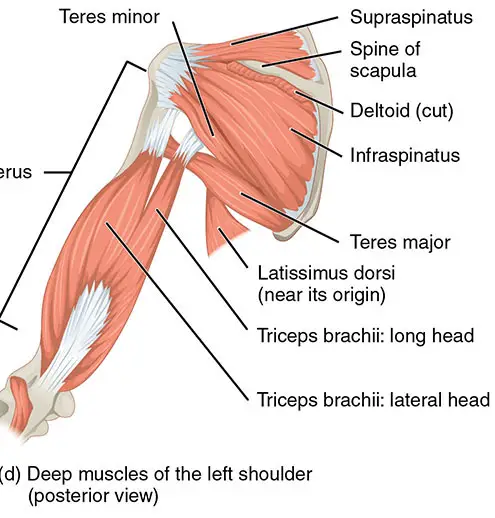Muscles of the Upper Arm
- The muscles of the upper arm govern the movement of the forearm.
- The muscles in the upper arm fall into two classes.
- anterior flexors (biceps).
- supinators (brachialis).
Types of Motion
The anterior flexors (biceps) bend the arm at the elbow. The supinators (brachialis) turn the palm of the hand up.
The posterior extensors (triceps) extend the arm at the elbow. The pronators subanconeus[1] turn the palm of the hand down. The bicep muscle is assisted by at least two others in raising the forearm. It is the triceps muscle (along the back of the upper arm) that is at least partly responsible for flexion. The biceps is the chief supinator of the forearm. By flexing the elbow so that the back of the hand approaches the shoulder, the biceps muscle will not contract, but will do so if we turn the forearm while keeping the arm in the flexed position.
This shows the integrative action of the muscles. The bicep muscle assists movement at two joints. 1) Elbow, 2) Radio-Ulnar Joint. It may assist movements at the shoulder when the forearm is fixed. We have the interesting physiological fact that various muscles are usually active in any movement. The same muscle contributes to a great variety of movement and may act upon more than one joint. Flexion at the elbow may involve as many as seven muscles and conversely. The brachioradialis[2] assists in flexion, pronation, extension, and supination. The brachioradialis's function is to bring the hand into a mid-position from either extreme of its range.

How are the anterior flexors of the Upper Arm used in piano playing?
The "anterior flexors" of the upper arm, primarily involving muscles like the biceps brachii, play a significant role in piano playing by facilitating the movement and stabilization of the forearm and hand. Here’s how they contribute to the mechanics of playing:
To optimize the use of anterior flexors in piano playing, pianists often engage in specific exercises aimed at strengthening these muscles and improving their endurance. This not only enhances performance but also helps in reducing the risk of injuries related to muscle strain or overuse. Regular practice, combined with proper technique and ergonomic positioning, ensures that these muscles contribute effectively to the art of piano playing.
- Forearm Flexion: The anterior flexors are responsible for flexing the elbow, which brings the forearm toward the upper arm. This movement is crucial when adjusting the distance between the player and the keyboard, allowing for more comfortable access to the keys across the entire span of the piano.
- Stabilization and Control: During piano playing, maintaining a stable and controlled posture of the arm is essential for precise key strikes. The anterior flexors help stabilize the forearm, particularly when the hand moves across the keyboard for wider arpeggios or reaching for octave spans. This stabilization is crucial for both dynamic control and the prevention of overstrain injuries.
- Endurance and Strength: Playing the piano, especially for extended periods or works that require vigorous activity, demands endurance and strength from the arm muscles. The anterior flexors support these requirements by enabling pianists to sustain the necessary force and motion without fatigue, thus contributing to overall performance stamina.
- Dynamic Range and Expression: The ability to play softly (piano) or loudly (forte) also hinges partly on how well a pianist can control their arm muscles. The flexing action of the anterior flexors can help in applying varying degrees of pressure on the piano keys, which is essential for achieving a broad dynamic range and expressive playing.
To optimize the use of anterior flexors in piano playing, pianists often engage in specific exercises aimed at strengthening these muscles and improving their endurance. This not only enhances performance but also helps in reducing the risk of injuries related to muscle strain or overuse. Regular practice, combined with proper technique and ergonomic positioning, ensures that these muscles contribute effectively to the art of piano playing.
Physiological Mechanics of Piano Technique
[1]subanconeus:The subanconeus has been described as “the name given to a few fibres from the under surface of the lower part of the triceps muscle, which are inserted into the posterior ligament of the elbow joint.
[2]brachioradialis is a muscle of the forearm that flexes the forearm at the elbow. It is also capable of both pronation and supination, depending on the position of the forearm.